We finally arrived in South Dakota – a trip two years in the making due to the pandemic. After settling into our cabin in Hill City, the first thing on our agenda was to see nearby Mt. Rushmore.
As a huge fan of Alfred Hitchcock’s “North By Northwest,” I’ve always wanted to see the iconic monument dedicated to the four presidents. Although several friends who’d been to Mt. Rushmore said they were disappointed that it only took an hour or two to see, I was still eager to visit.
Getting There
With that in mind, we started out to spend the morning at the memorial before heading into Custer State Park. While only a 30-minute drive from Rapid City, Mt. Rushmore sits close to the smaller towns of Hill City, Keystone, and Custer.
The National Park Service doesn’t charge entrance fees to visit Mt. Rushmore. However, they do charge $10 per vehicle for parking (even for National Park Passholders). After paying at the entrance gate, staff directed us to a specific level of the large parking deck. From there, we walked a short way to the entrance.
Avenue of Flags and Borglum Visitor Center
Passing the gift shop, the Avenue of Flags greeted us. Representing 50 states, the District of Columbia, and 5 territories, the alphabetically arranged flags flank the wide path that leads to a large viewing terrace. With each carving measuring 60 feet tall, we found the carvings at Mt. Rushmore more impressive than we imagined.
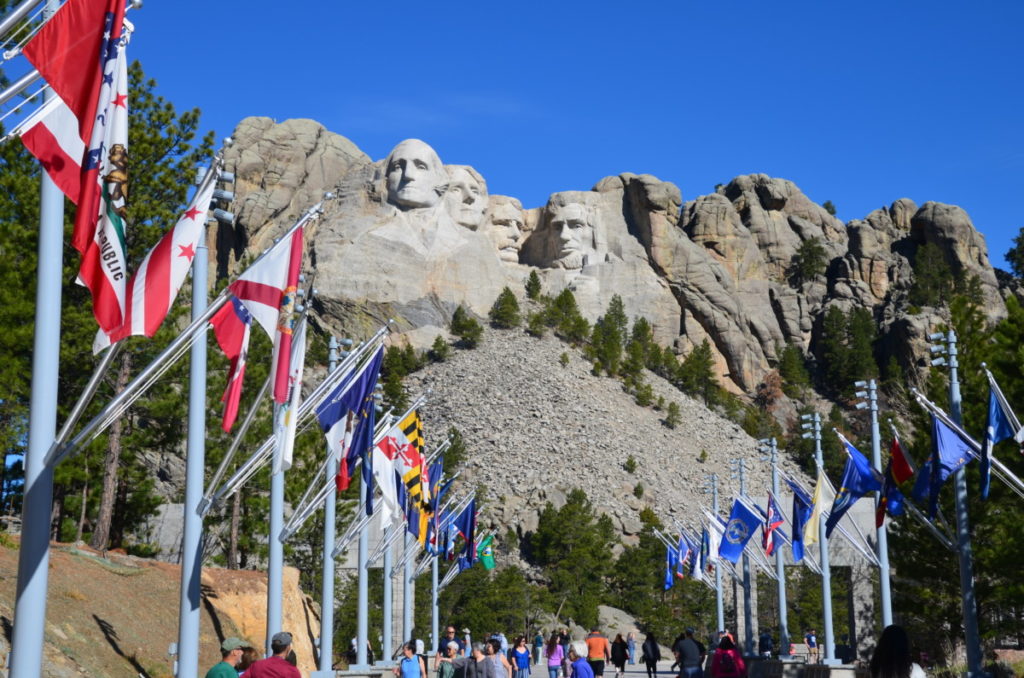
After taking lots of photos, we headed to the visitor center located one level below the viewing terrace. Sadly the two-story cafeteria with lots of windows shown in “North By Northwest” was torn down in the 1990s to make way for a larger visitor center, amphitheater, and parking facilities. Inside, we watched a short film detailing Mt. Rushmore’s history. Additionally, an exhibit room next to the theatre displayed tools and materials used during construction. To carve the memorial, many workers scaled the mountainside in a bosun chair, a cross between a swing and a harness, held by 3.8-inch cables and lowered by a hand crank. Fortunately, none of the 400 workers lost their lives during the 14-year project.
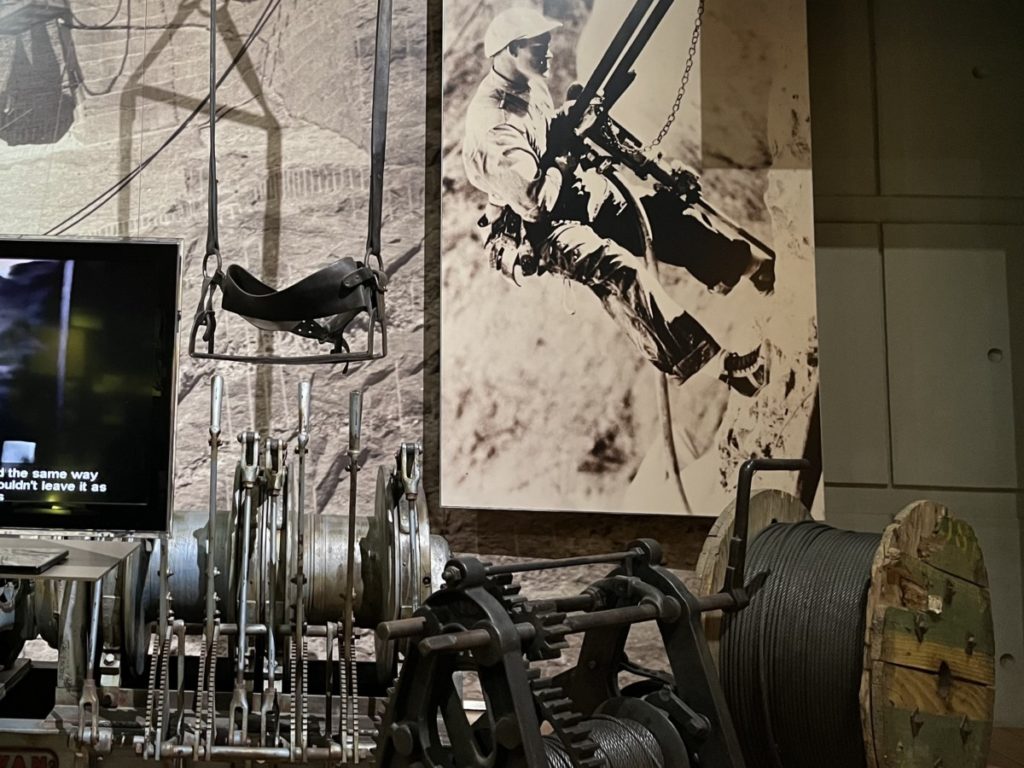
The Presidential Trail and History of Mt. Rushmore
The best way to see the monument up close is by taking the 0.6-mile Presidential Trail. From west to east, the first half has no stairs, but the second half entails over 400 (mostly downhill) stairs. While visitors can’t climb the monument, this path takes guests right to the base of all four presidents: George Washington, Thomas Jefferson, Theodore Roosevelt, and Abraham Lincoln.
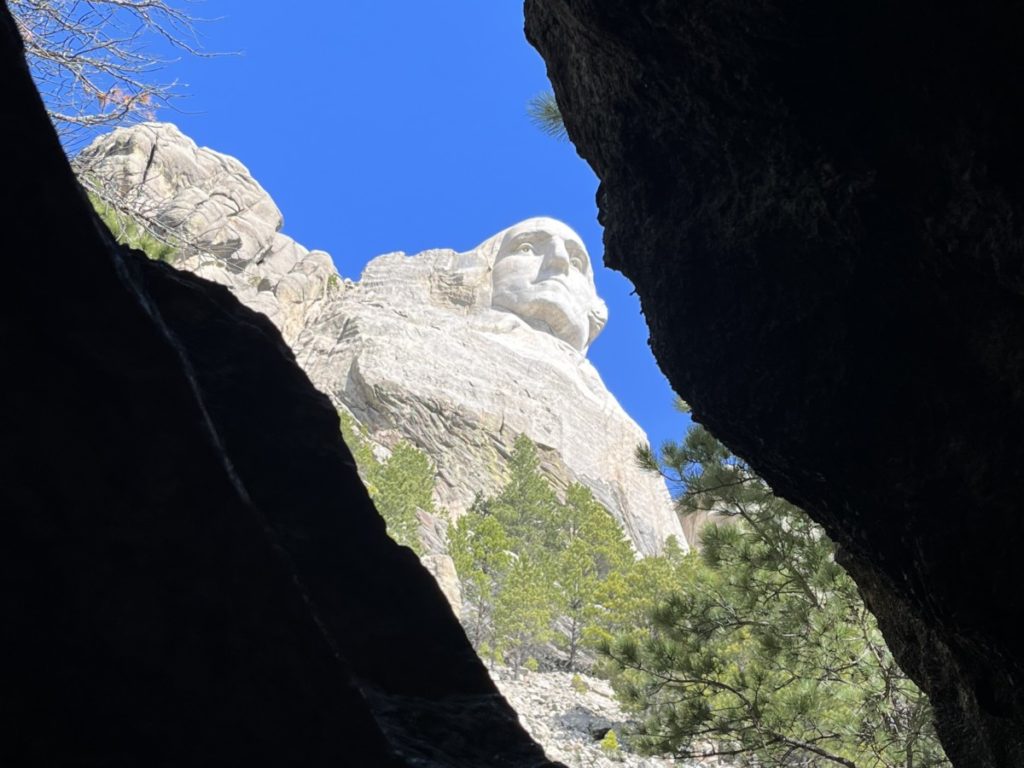
I had many questions that were answered at the site. Why was there a carving at Mt. Rushmore? Who’s idea was it? How long did it take? Who paid for it?
Mt. Rushmore was the idea of Doane Robinson, a South Dakota lawyer turned historian. Looking at the Needles area of Custer State Park, he felt large carvings of western leaders such as Lewis & Clark, Buffalo Bill Cody, and Oglala Lakota leader Red Cloud would boost tourism to the area.
In 1924, Robinson turned to renowned sculptor Gutzon Borglum. At the time Borglum was working on the carving at Stone Mountain Park in Georiga. Due to disputes with organizers, Borglum left the project and readily moved to South Dakota. Instead of the Needles area, Borglum chose nearby Mt. Rushmore for the carving instead. He also felt US Presidents, rather than western leaders, carved in the mountain would attract more visitors.
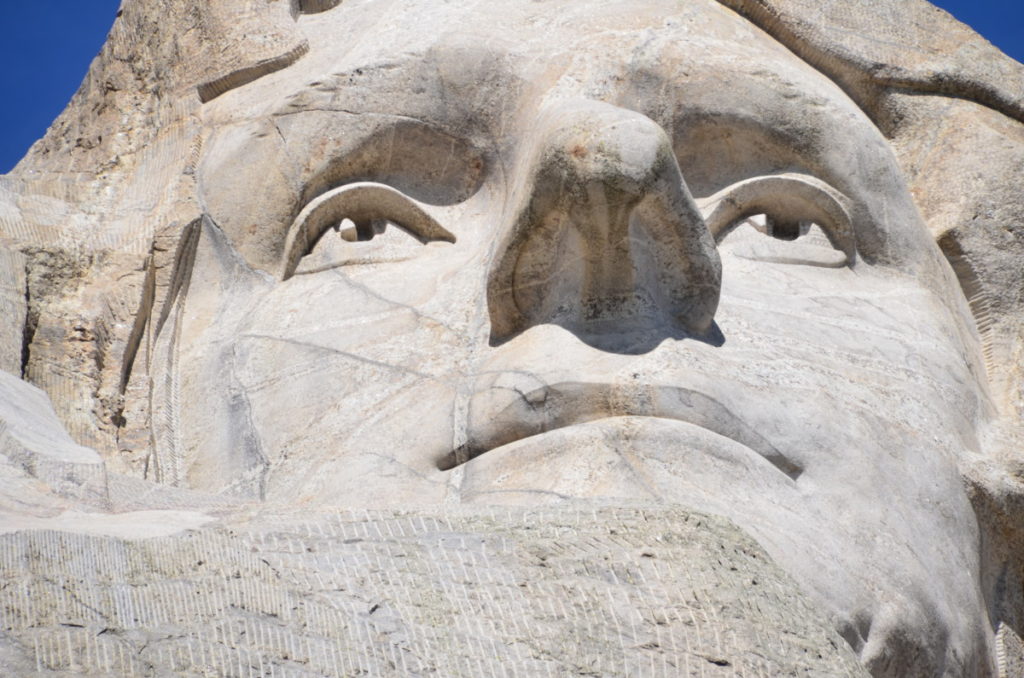
Work on the carving began in 1927 and President Calvin Coolidge, who was spending the summer at Custer State Park, attended the dedication and promised federal funding. It took a couple of years, but in 1929, Coolidge signed the Mt. Rushmore National Memorial Act allowing $250,000 of matching government funds for the project.
The work was dangerous. Workers climbed over 700 stairs to the top of the mountain to start the day, which primarily consisted of placing dynamite to blast off over 90% of the carving. Later, buffer tools smoothed over the surface before workers performed fine detailing. New Deal programs continued to help with funding and in 1933, President Franklin Roosevelt transferred the project under the National Park Service’s jurisdiction.
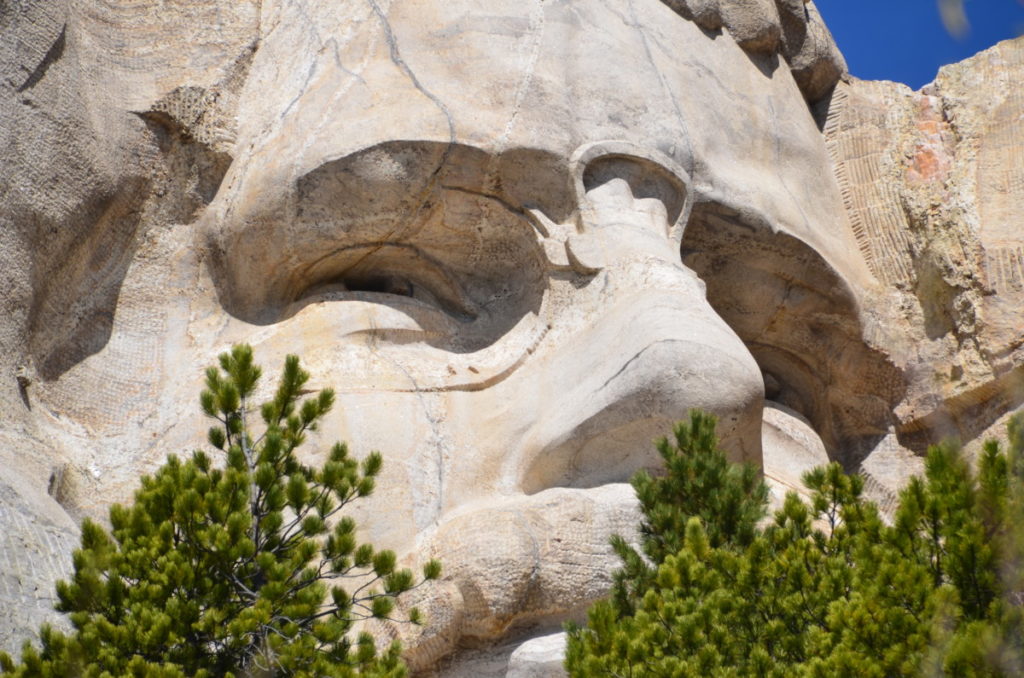
Borglum and his workers, mostly miners, completed the head of George Washington in 1934, followed by Thomas Jefferson in 1936, Abraham Lincoln in 1937, and Theodore Roosevelt in 1939. Originally, Borglum started the carving of Thomas Jefferson on the other side of George Washington but when cracks developed, he erased the head with dynamite and began the carving again on the other side of Washington. Borglum also planned to add an inscription, written by essay winner William Andrew Bucket, detailing the history of the US’s first 100 years. Unfortunately, plans for this inscription – also called the Entablature – had to be scrapped after the relocation of Thomas Jefferson. Today, visitors can read Bucket’s essay on a plaque outside the visitor center.
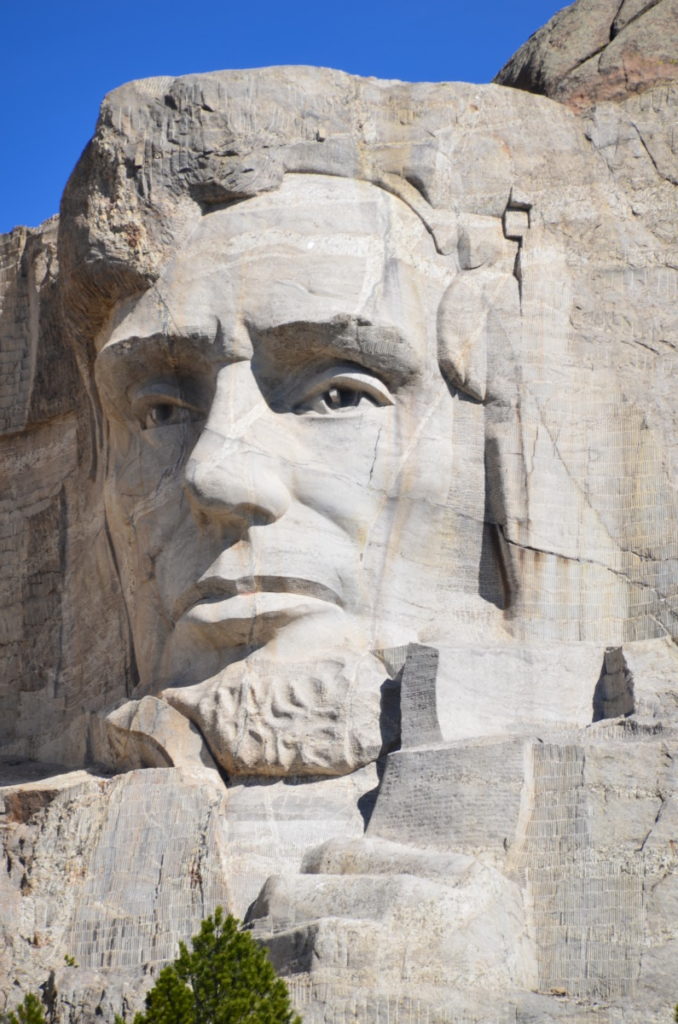
Borglum also envisioned the monument to feature the four presidents from the waist up and a secret room behind Lincoln called the Hall of Records. It was not meant to be. Due to Gutzon Borglum’s death in early 1941 and with funding always in short supply, Congress deemed the monument complete at a cost of one million dollars.
Sculptor’s Studio
Before heading back to the visitor center, the Presidential Trail led to the Sculptor’s Studio. Throughout the summer, visitors can step inside Borglum’s studio to see the 1/12 scale model of Mt. Rushmore and listen to short ranger programs.
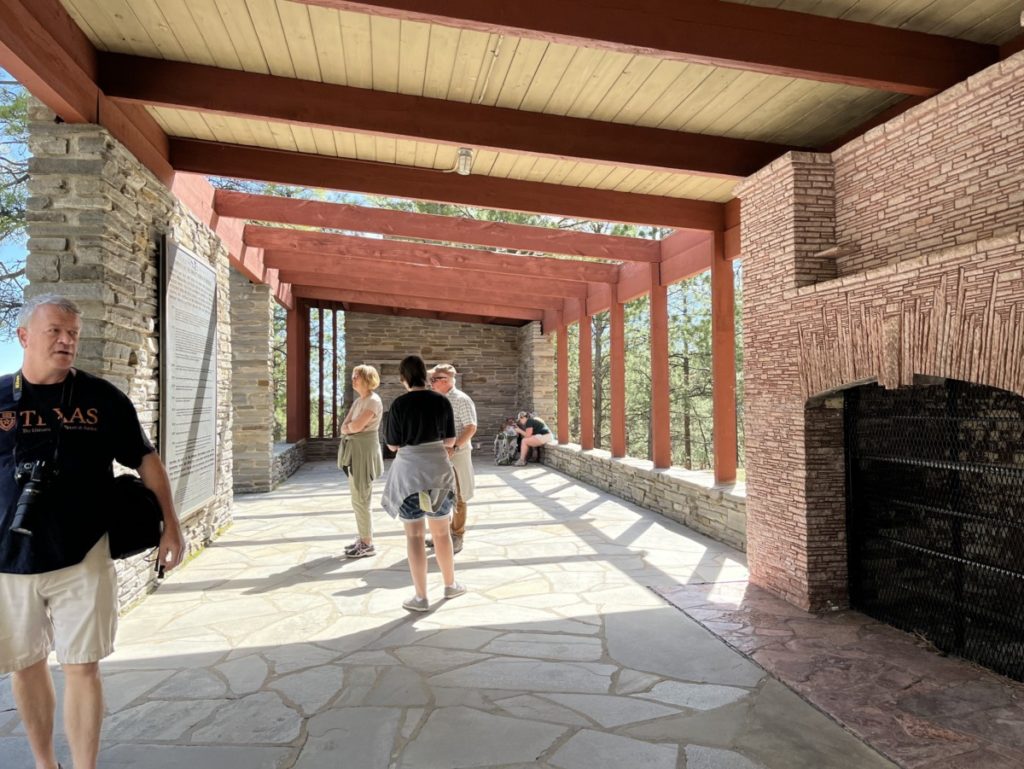
Another stop on the trail is the site of the original Sculptor’s Studio used from 1927-to 1939. Today it serves as another viewing terrace to the monument.
Light Ceremony and Conclusion
Also during the summer, Mt. Rushmore hosts the Evening Lighting Ceremony in the amphitheater. After a short ranger talk and movie, the lights slowly come upon the faces of the presidents. Park staff then invite all veterans and active-duty military to lower the flag.
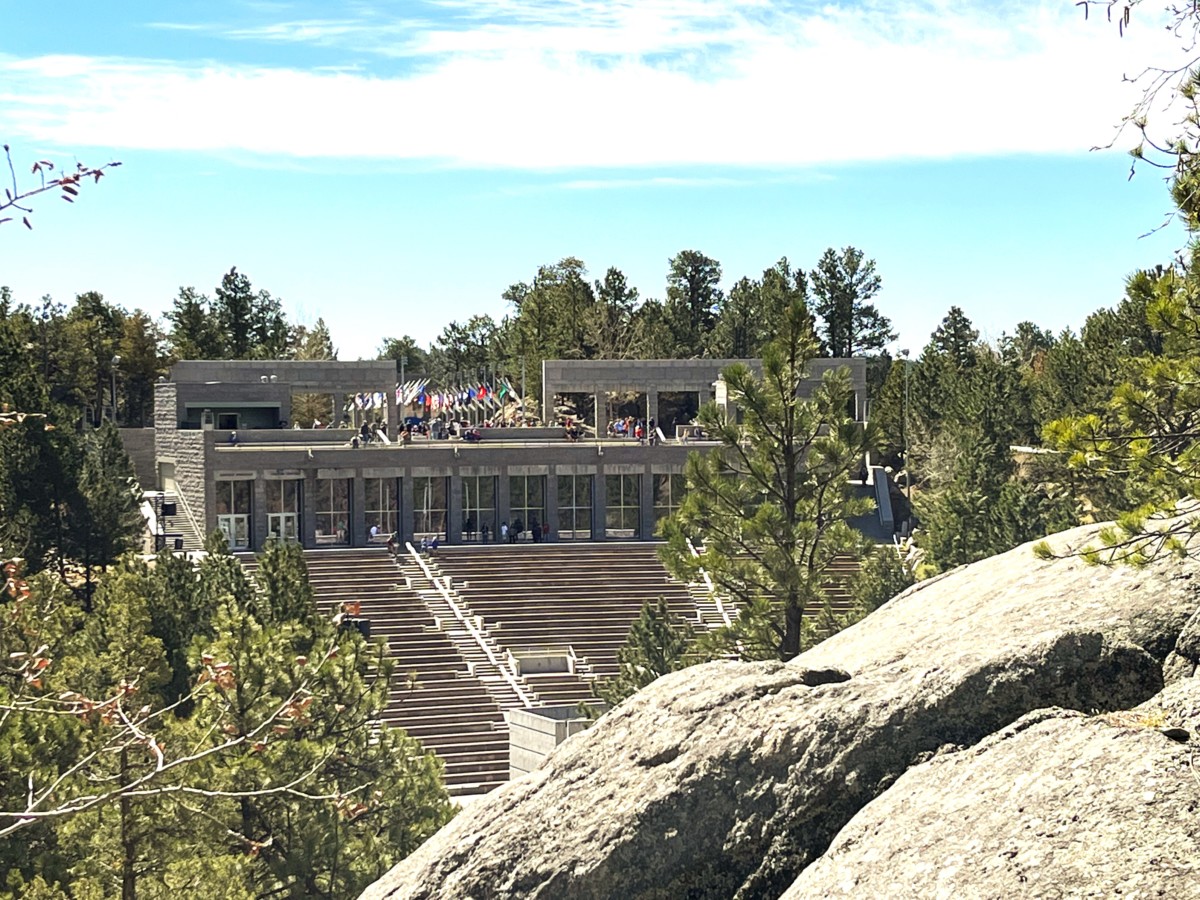
For those people who told us they were disappointed that Mt. Rushmore only took an hour or two to visit, I can sum it up this way. Think of a visit to Mt. Rushmore like you would a visit to the Washington Monument, Lincoln Memorial, or Jefferson Monument in Washington, DC, rather than Yellowstone or Yosemite. Don’t look for lodges and hiking trails, but rather take in the enormity of the project to carve the four figures into the mountain.
Was Mt. Rushmore worth seeing? Absolutely!
For more information, click here.
